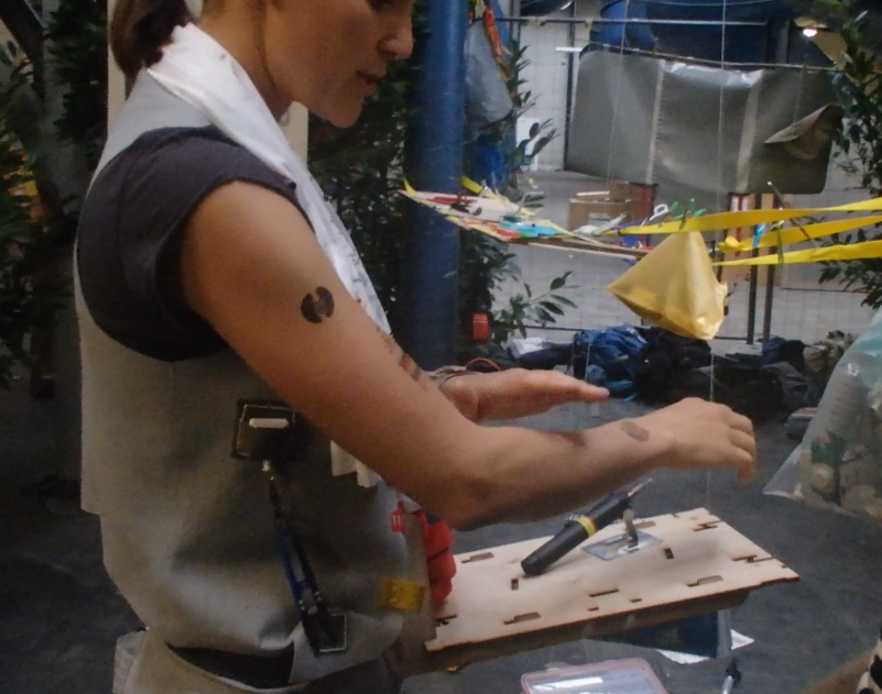Design probes (concept)
Inspired by Kevin Chiam, who designed and invented kitchenware to allow the blind and visually impaired to cook safely (read more here: https://www.channelnewsasia.com/news/cnainsider/designer-folks-kevin-chiam-invents-kitchen-products-blind-10762318), I decided to come up with a scrapbooking template that allows the blind to write and make their own gift cards. This will be based on my experience when I partook in the scrapbooking practice with my friend Elena.
Design probes (kit)

My probe kit includes the following items:
- Blindfold (to simulate blindness)

2. Instruction booklet with various tasks

3. 3-drawer case (to act as an organisation system for scrapbooking, as one of my pain points when participating in the practice included the organisation of the many tools/decorative stuffs used in scrapbooking, which can potentially be a huge problem for those who are blind. Without an organisation system, the blind may take very long to find the item he/she wants to use for a card, especially without their sense of sight. However, a mini drawer case labelled with braille will help them find the item they want to use easily, such as stickers or distress ink. For this probe, I labelled the drawer with normal paper labels as my participants cannot read braille)

4. Pop-up stickers in drawer 1 (it is important to use pop-up stickers so that the blind can figure out what the sticker is and its orientation more easily. If flat stickers were used, it can be quite challenging to do so)

5. Distress ink and sponge in drawer 2

6. Decorative pegs in drawer 3

As the blind rely on other senses, such as sense of touch, hearing, smelling, to go about completing tasks, I decided to capitalise on the individual’s sense of touch in my probes. Below are the tasks that I included in the instruction booklet, which have to be completed blindfolded.
Design probes (tasks)
Front page

Basic instructions: 1. Follow instructions closely. 2. Call me to clarify if you have questions. 3. Have fun! 🙂
Task 1

Instructions: Put on the blindfold and write a well-wishing message to any friend/family in the lines below. Answer the following questions: 1. What are some of the difficulties you had? 2. Are the lines helpful with this task? Why/why not?
Rationale for this task: To find out whether lines constructed with aluminimum wire helps the blind write a message more neatly, as they can use their sense of touch to guage the writing area and write in straighter lines.
Task 2

Instructions: Using the pop-up stickers provided, stick some in the rectangle below, while blindfolded. Try your best to stick them in the correct orientation. No cheating! Answer the following questions: 1. What are some of the difficulties you had? 2. Is the box helpful in this task? Why/why not
Rationale for this task: To find out whether a box constructed with aluminimum wire helps the blind paste stickers more easily, as they can use their sense of touch to guage the pasting area.
Task 3

Instructions: Using the distress ink and sponge provided, put on your blindfold and apply the distress ink in the rectangle below. Answer the following questions: 1. What are some of the difficulties you had? 2. Is the rectangle helpful with this task? Why/why not?
Rationale for this task: To find out whether a rectangle constructed with aluminimum wire helps the blind distress paper more easily, as they can use their sense of touch to guage the distressing area.
Task 4

Instructions: Using the decorative pegs provided, put on your blindfold and add the pegs however you want to this booklet. When you are done, snap a picture of your task and send it to me via Whatapps. Answering the following question: 1. What are some of the difficulties you faced?
Rationale for this task: To find out how a blind person utilises decorative pegs when scrapbooking, and to see if it is feasible to include decorative items in the final scrapbooking template.
Findings
I coducted my probes with 3 person, including my friend Elena who is the original practitioner of scrapbooking. The other 2 persons are my younger sister who is 12 years old, and another friend who is 25 years old. I conducted the probe with my younger sister as I wanted to see whether the tasks are too difficult for a younger person. This is because I hope that the final scrapbooking template can be used by the blind of all ages so that they too can make cards for their loved ones.
Task 1 (findings)
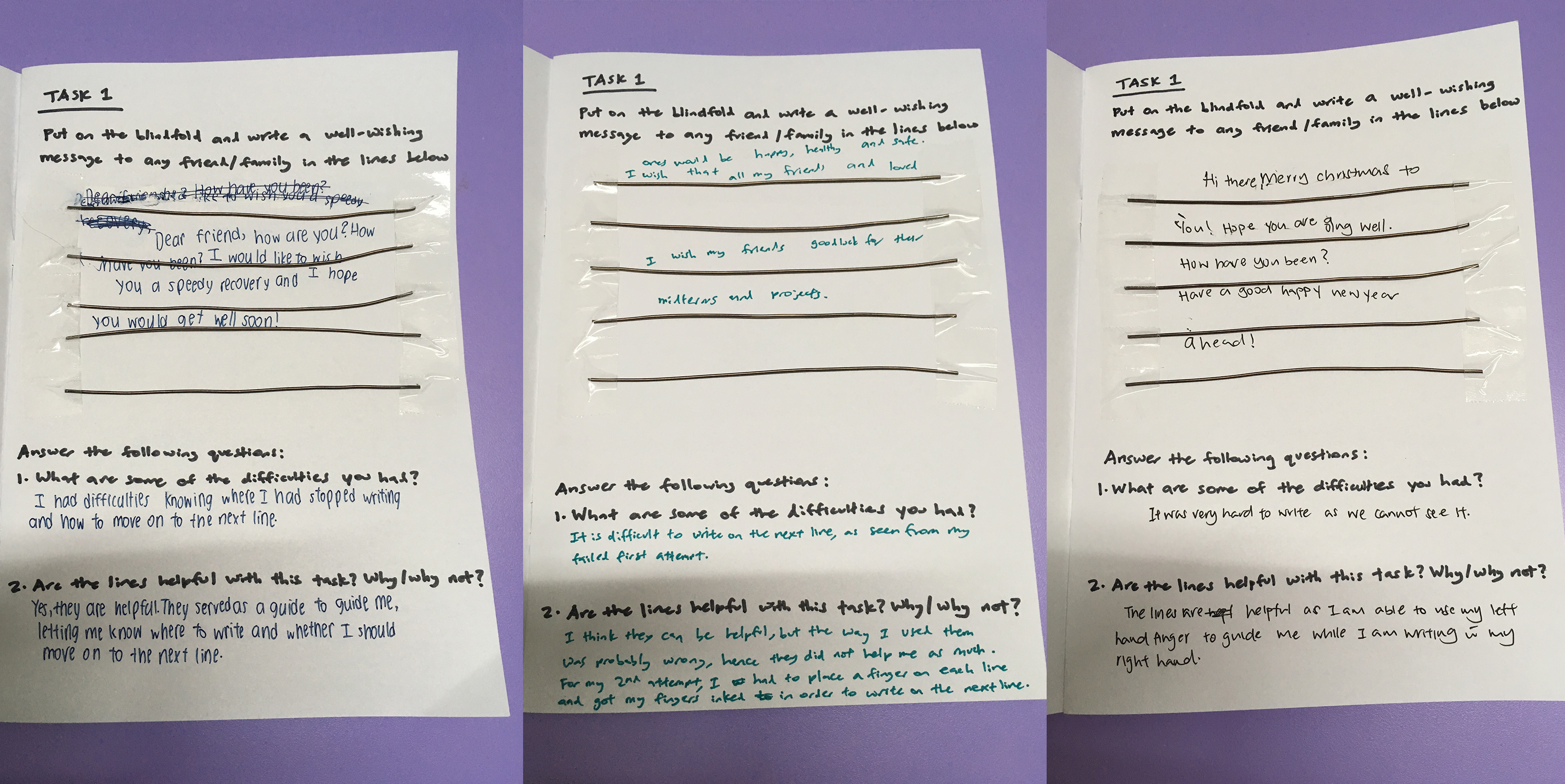
2 out of 3 persons said that it is difficult to move to and write on the next line, although the lines were somewhat useful as a guide. Based on the comments, I think I underestimated the difficulty of this task. I have to come up with a better guide in order to improve the performance of this task.
Task 2 (findings)
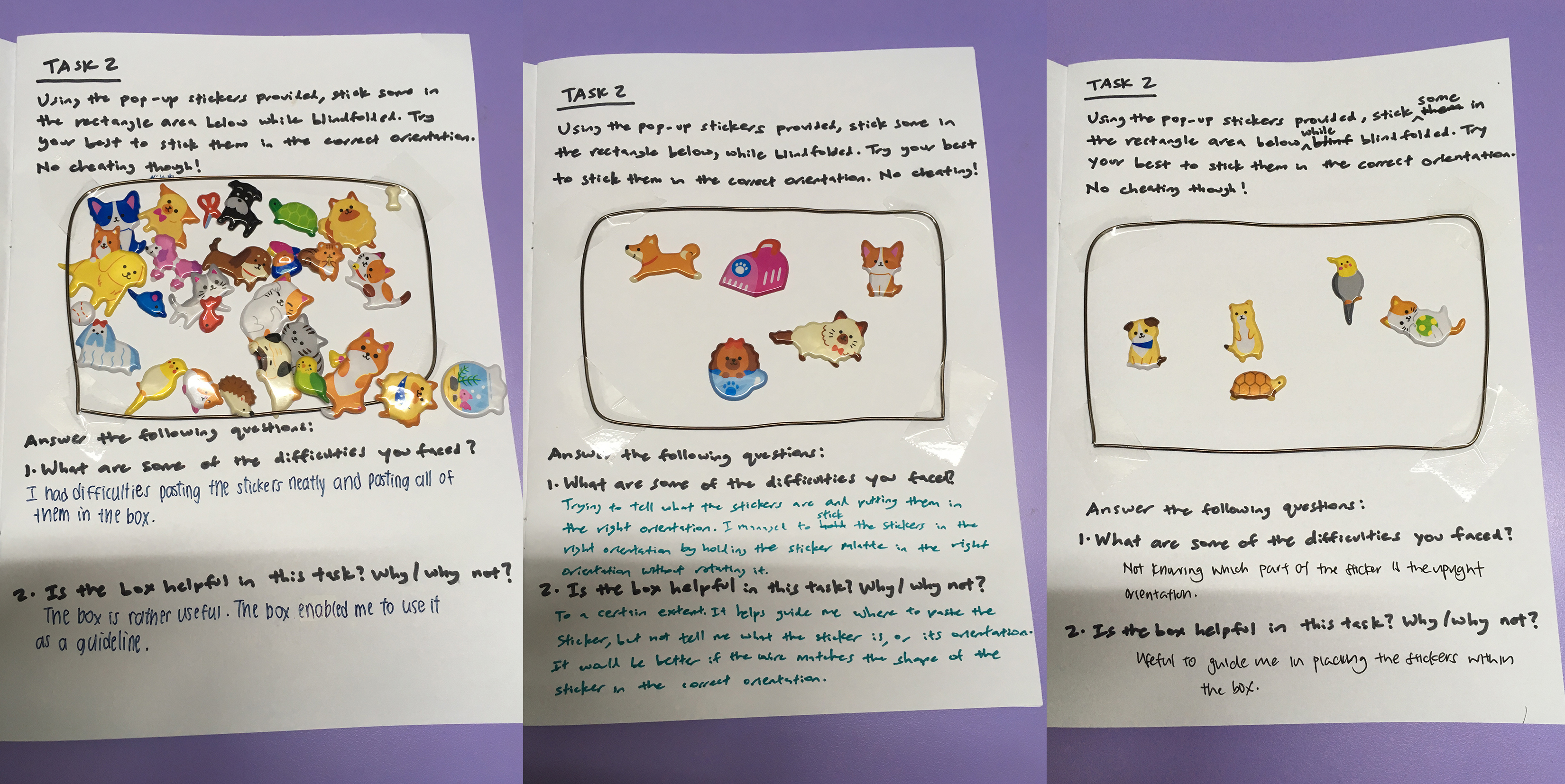
All 3 said that the box was useful in allowing them to guage the pasting area, but the box was not helpful in allowing them to figure out the orientation of the pop-up stickers (i.e. they do not know whether the cat is sitting upright or upside down). One notable comment is to make the guide (wire) the shape of the sticker, so the user just have to paste the right sticker into the right shape without having to worry about orientation.
Task 3 (findings)
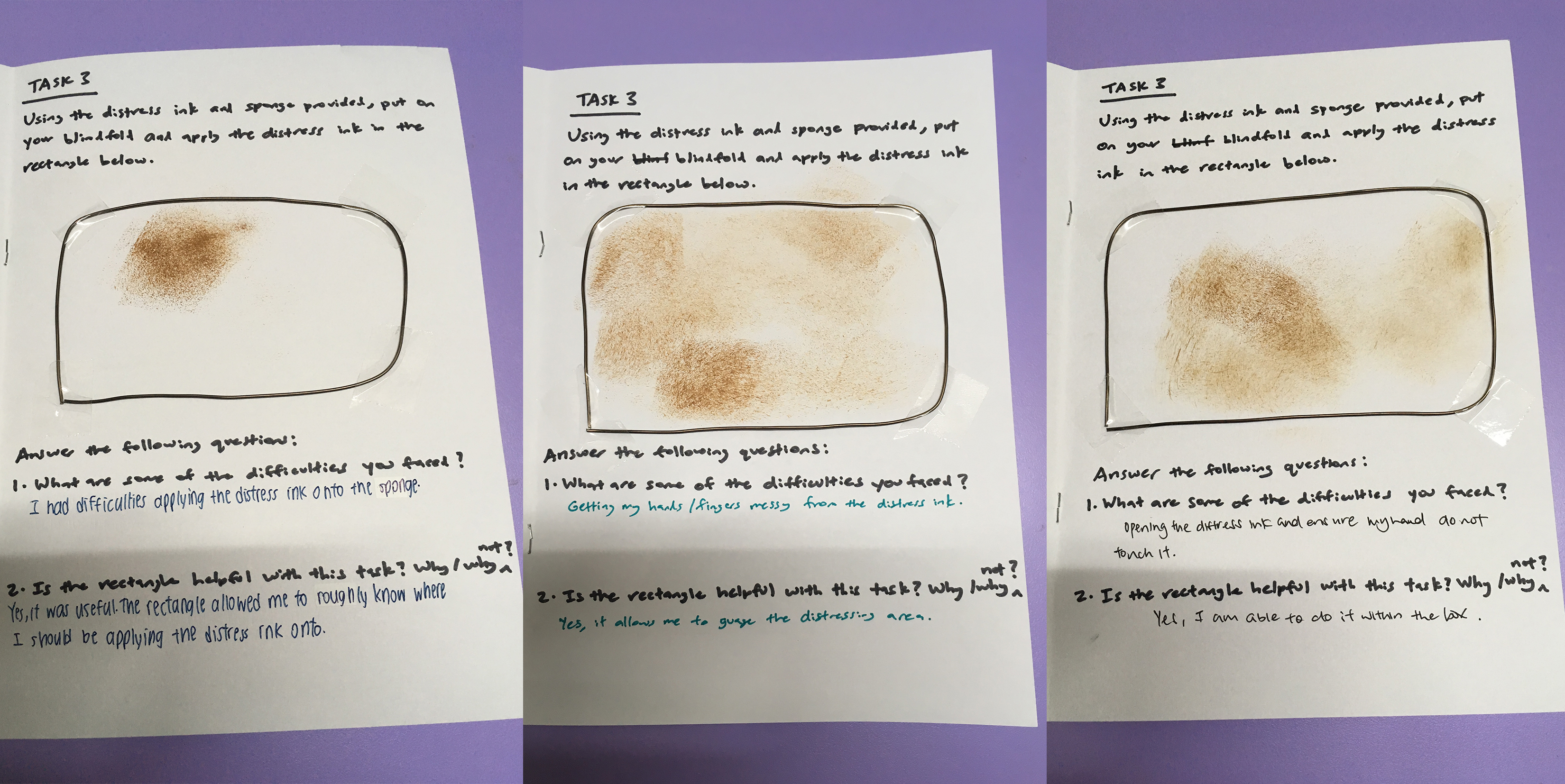
All 3 said that the rectangle was helpful in allowing them to guage the distressing area, but it does not solve the issue of their hands getting messy from the distress ink. This issue is hard to solve, unless the distress ink is sprayed onto the paper instead of using a sponge manually.
Task 4 (findings)
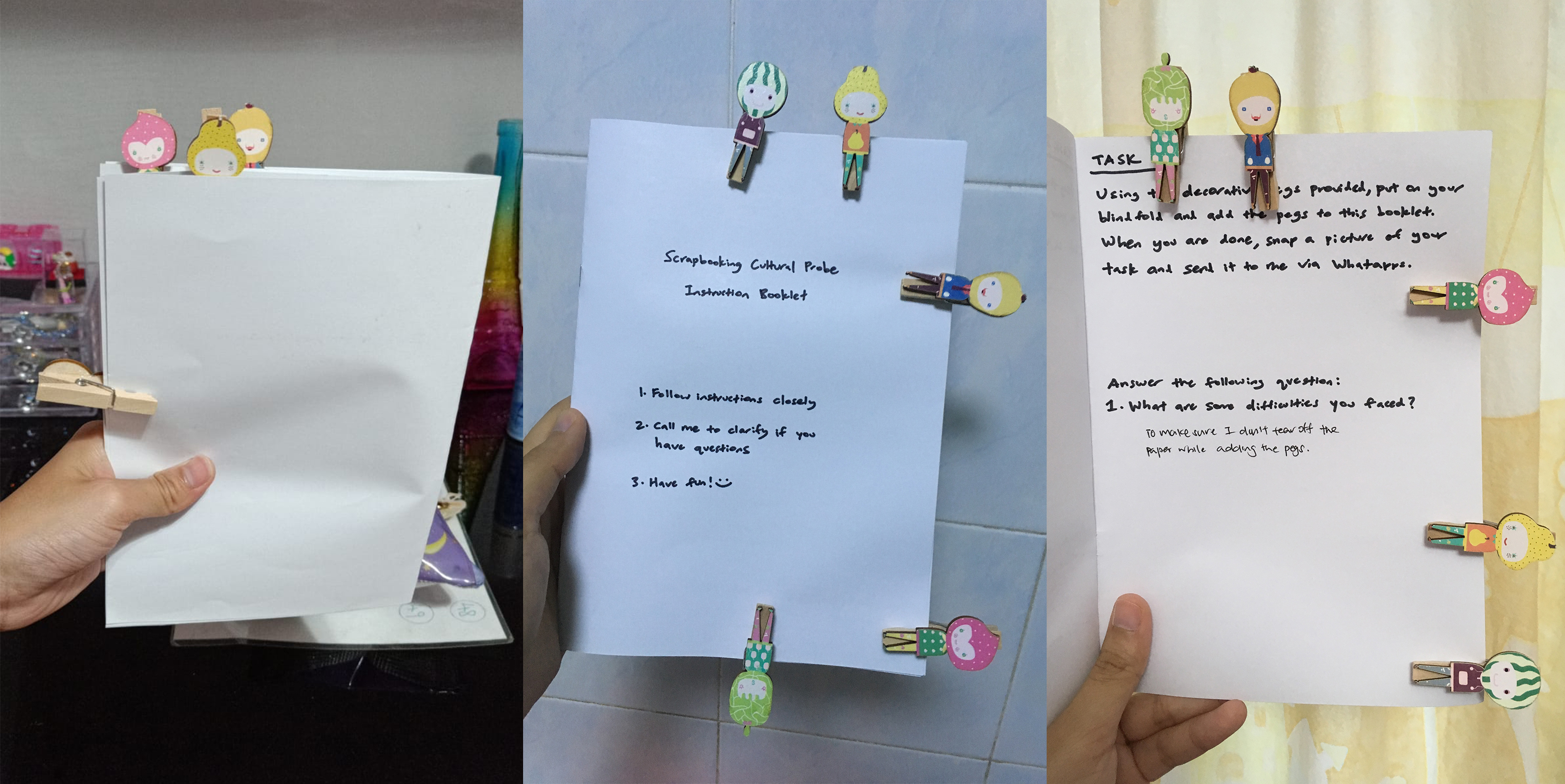
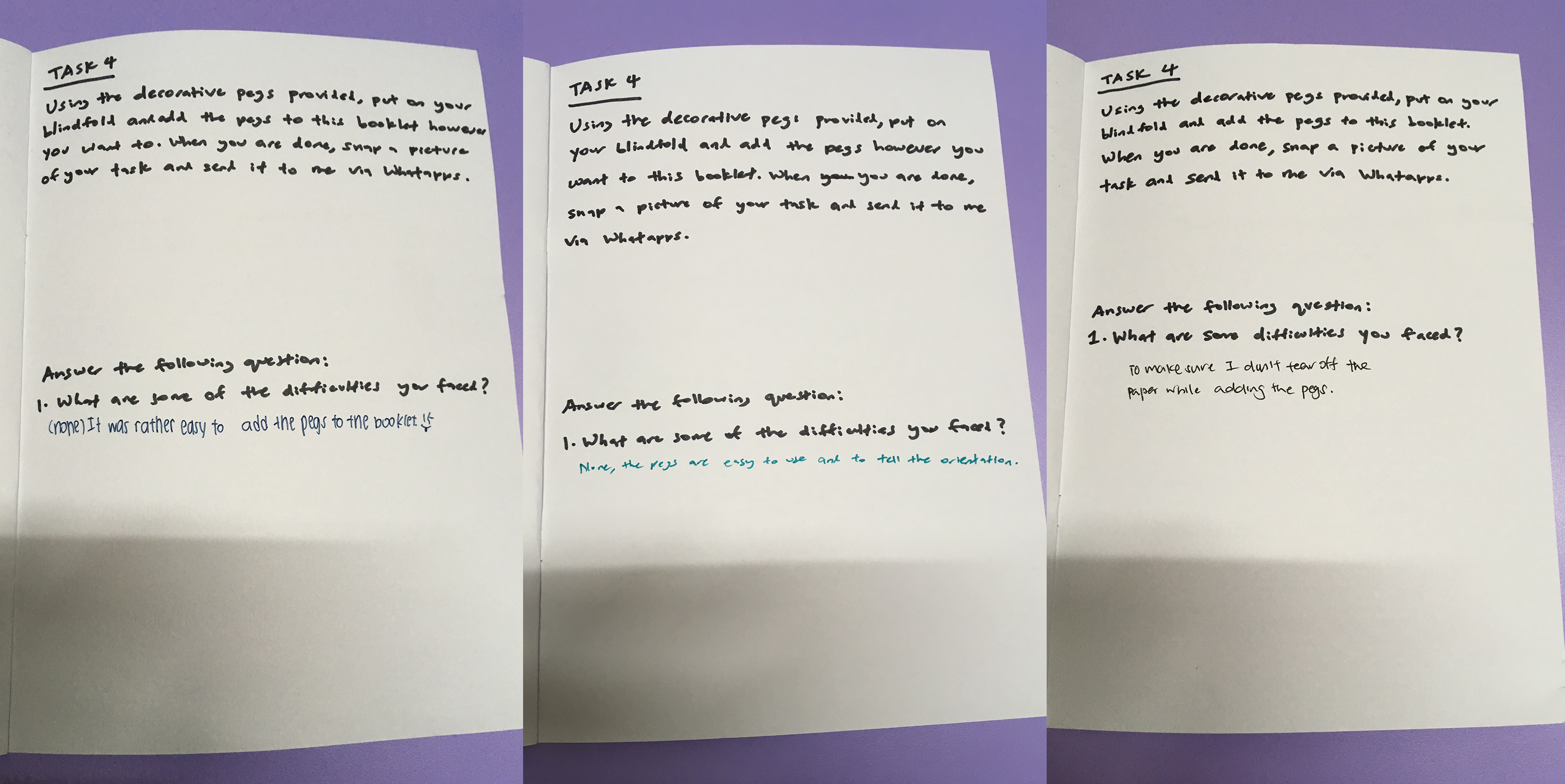
Based on the comments, it is safe to conclude that decorative items such as pegs are very easy to use even when blind. Hence, I should include them in my template.
Conclusion
From the cultural probes conducted, I managed to understand how people do tasks related to scrapbooking while blind, and found out the flaws of my concept designs. Moving on, I know what to improve on and what to keep.
Things to improve:
1. Wire guide for task 1 have to better guide users to write on the next sentence.
2. Wire guide for task 2 should match the shape of the stickers in the right orientation so that it is easier for users to stick them accurately.
3. Figure a way for users to use the distress ink without getting their fingers dirty (maybe spraying instead of sponging).
Things to keep:
1. Include decorative items such as pegs/stickers.
2. Wire guides are useful in guiding users to a certain extent, although they need improvement in design for some tasks.
Teo Zi Lin – A0160163R
